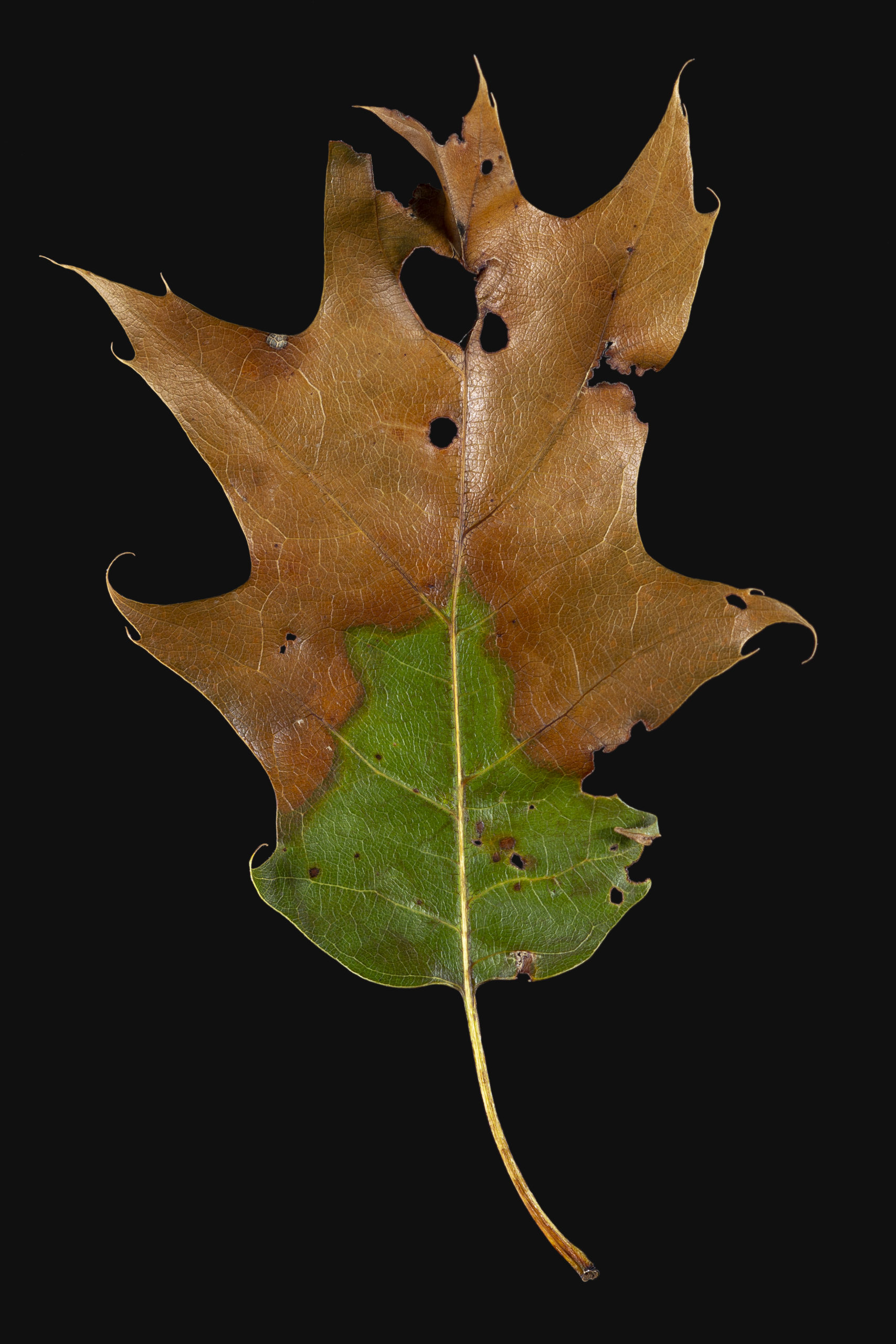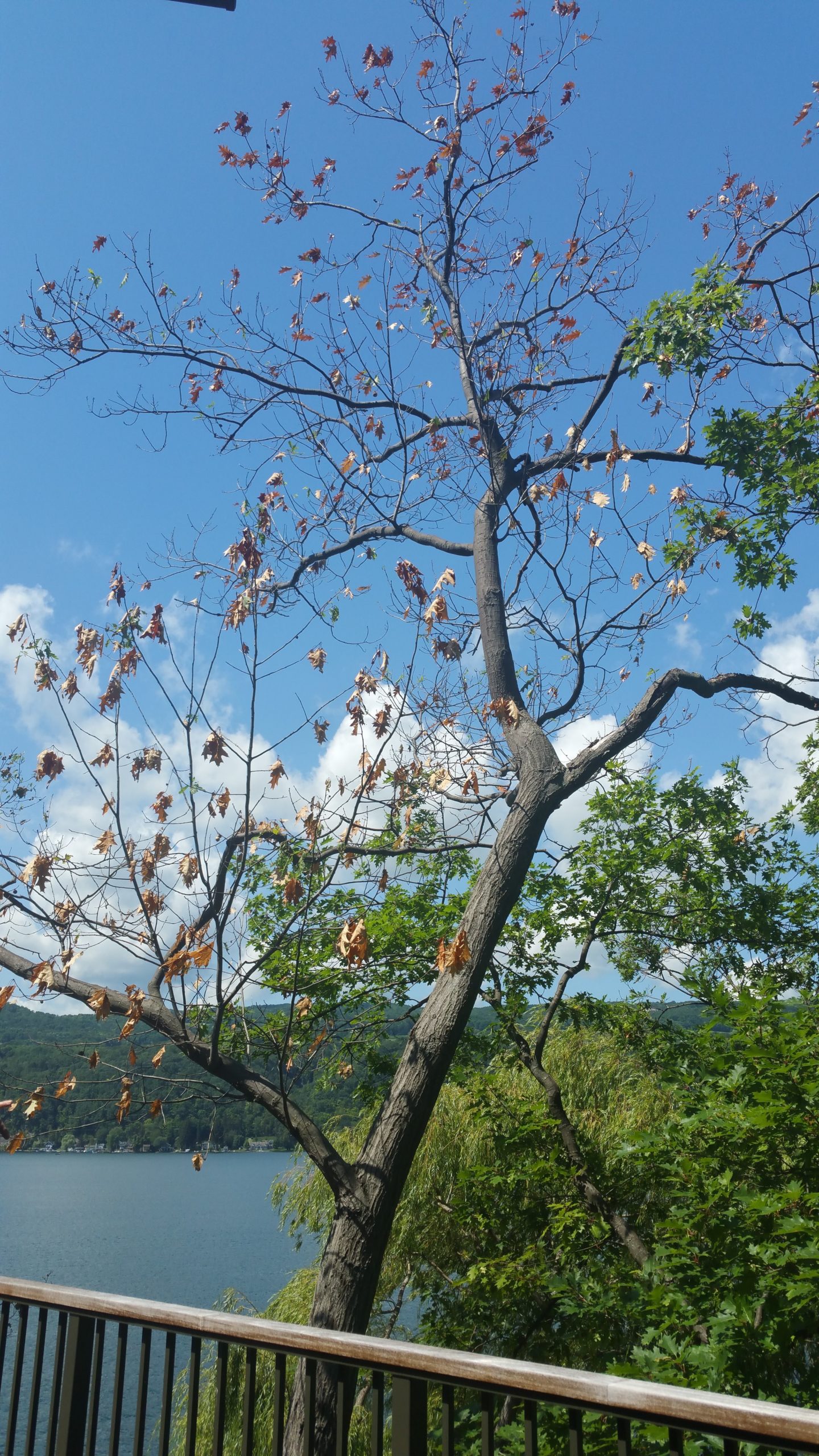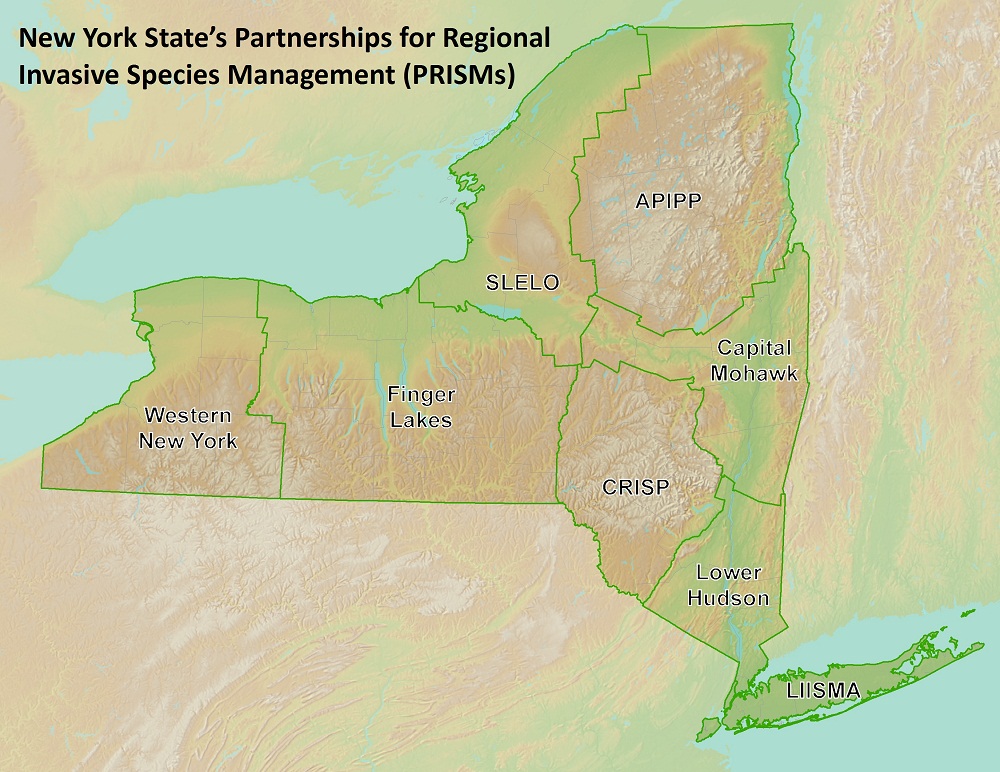Be on the lookout! Oak wilt
Featured Invasive- Oak wilt
Common name: Oak wilt
Scientific name: Bretziella fagacearum
Origin: Unknown, first detected in Wisconsin in the 1940s.
Description
Oak wilt is a fungal disease of oak trees that usually kills infected trees. Oak wilt spreads through two pathways. The aboveground pathway occurs when nitidulid beetles carry oak wilt spores from an infected tree to a wound on a healthy tree. This causes long distance spread of the disease and creates new infection centers. The belowground pathway occurs when the fungus moves via root grafts. Root grafts form when trees of the same species’ roots connect and fuse together. This causes local spread of the disease, allowing the fungus to move from the infected tree into neighboring trees.
Threat
The oak wilt fungus blocks the flow of water and nutrients from the roots to the crown, causing the leaves to wilt and fall off, and usually killing the tree. Red oaks (scarlet oak, pin oak, black oak, etc.) can die within a few weeks to six months, and the disease spreads quickly from tree to tree. White oaks (bur oak, chestnut oak, etc.), often take years to die and the disease is less likely to spread to additional trees.
Signs and Symptoms
Infected trees begin to wilt and drop leaves in July-August. Leaves often look as if they’ve been “dipped in brown paint”, with browning leaf tips and green tissue near the stem. An infected tree can shed over half of its leaves within a few weeks.
Management
DEC aims to eradicate infection centers by chipping or burning all infected trees. Depending spread risk and management objectives, potentially root grafted trees may also be removed. If site characteristics are favorable, root graft disruption can also be used. Root graft disruption, or trenching, is used to sever the roots between root grafted trees to prevent the belowground spread of the disease.
Prevention
Oak wilt is spread by nitidulid beetles, which carry fungal spores to wounded trees. Spores and beetles can potentially be transported in firewood, so one way to prevent oak wilt spread is to use local firewood. Quarantine districts that prohibit the movement of firewood and oak logs are in place in Canandaigua, South Bristol, and Middlesex to help prevent oak wilt from moving into other areas of the state.
Oak wilt can also be spread to trees through wounds caused by pruning, construction, logging, or machinery. To lower the risk of oak wilt, avoid pruning oaks from March to September. If wounds are made, immediately cover them with a water-based spray paint or wound dressing. This will slow wound healing but reduces the risk of infection.
The oak wilt program relies heavily on public reporting to find new infection centers. You can help the DEC look for oak wilt by sending pictures of symptomatic trees to foresthealth@dec.ny.gov. For more information, check out the DEC’s website at https://www.dec.ny.gov/lands/46919.html
Distribution
Oak wilt has been detected in multiple areas around Canandaigua Lake. The disease was first detected in the Finger Lakes in the town of Canandaigua in 2016 when a concerned homeowner reported a wilting oak in her backyard. The disease was found again in South Bristol in 2018 and most recently in Middlesex in 2019. Statewide, there have also been detections in Glenville, Brooklyn, and across Long Island.
Research
DEC has placed nitidulid traps around Canandaigua Lake and south through Steuben county. Collected beetles will be sent to Cornell Plant Disease Diagnostic Clinic to test whether they’ve been exposed to the oak wilt fungus. DEC is also experimenting with alternative disposal methods besides chipping or burning to safely destroy infected trees. Working with the New York New Jersey Trail Conference, conservation dogs Dia and Fagan are being trained to sniff out oak wilt infected trees, and will be used to help in survey efforts.
Pictures:
A symptomatic leaf from a red oak. Photo courtesy of Shaun Johnson, DEC Division of Lands and Forests’ Imaging Lab.
An infected red oak tree in Middlesex. Photo courtesy of NYS DEC.
A healthy (left) and symptomatic (right) red oak in mid-August. Photo courtesy of Kelsey McLaughlin, NYS DEC.
Oak wilt quarantine districts around Canandaigua Lake. Map courtesy of NYS DEC Division of Lands and Forests, Bureau of Invasive Species and Ecosystem Health.
Statewide oak wilt detections and quarantine districts. Map courtesy of DEC Division of Lands and Forests, Bureau of Invasive Species and Ecosystem Health.









